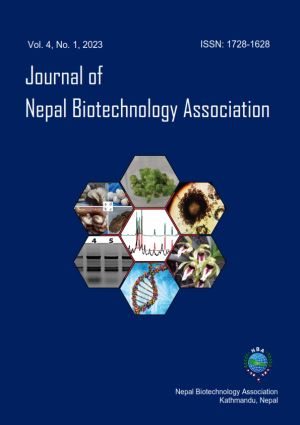Production of Cellulase from the Municipal Waste Residue by a Novel Cellulolytic Fungi
DOI:
https://doi.org/10.3126/jnba.v4i1.53446Keywords:
Aspergillus sp., Cellulase, Fungi, Municipal wastes, Submerged state fermentationAbstract
Cellulases catalyze the hydrolysis of 1,4-β-D-glycosidic linkages in cellulose and play a significant role in nature by recycling polysaccharide debris. This enzyme has enormous potential in industries such as textile wet processing, bio-stoning of denim fabric, biopolishing of textile fibres, softening of garments and removal of excess dye from the fabrics. Therefore, the research focused on obtaining new cellulose-producing microorganisms with higher specific activities and greater efficiency. By identifying a good strain, improving the production medium and using an alternative carbon source such as waste residue, this study aimed to lower the manufacturing cost of cellulase. This study was designed to assess the cellulase production by fungi isolated from water, soil, straw, dung, leaf and goat manure. In the present research, cellulase-producing fungal isolates obtained from waste samples were identified by morphological and microscopic features. On Congo red test, the largest zone of hydrolysis was found as 1.2 cm. From the morphological and microscopic test, the fungal strain was expected as Aspergillus sp. The assay of the enzyme cellulase was performed by measuring the release amount of reducing sugar. Optimization of process parameters was carried out for the isolate to maximize enzyme yield. On optimization, isolated fungal species showed maximum enzyme activity at a temperature of 30 °C and pH 6. Under optimized conditions of temperature and pH, agitation at 200 rpm with a 1 L/m air flow rate showed better cellulase activity. Cellulase production from Aspergillus sp. can be an advantage as the enzyme production rate is normally higher as compared to other fungi.




